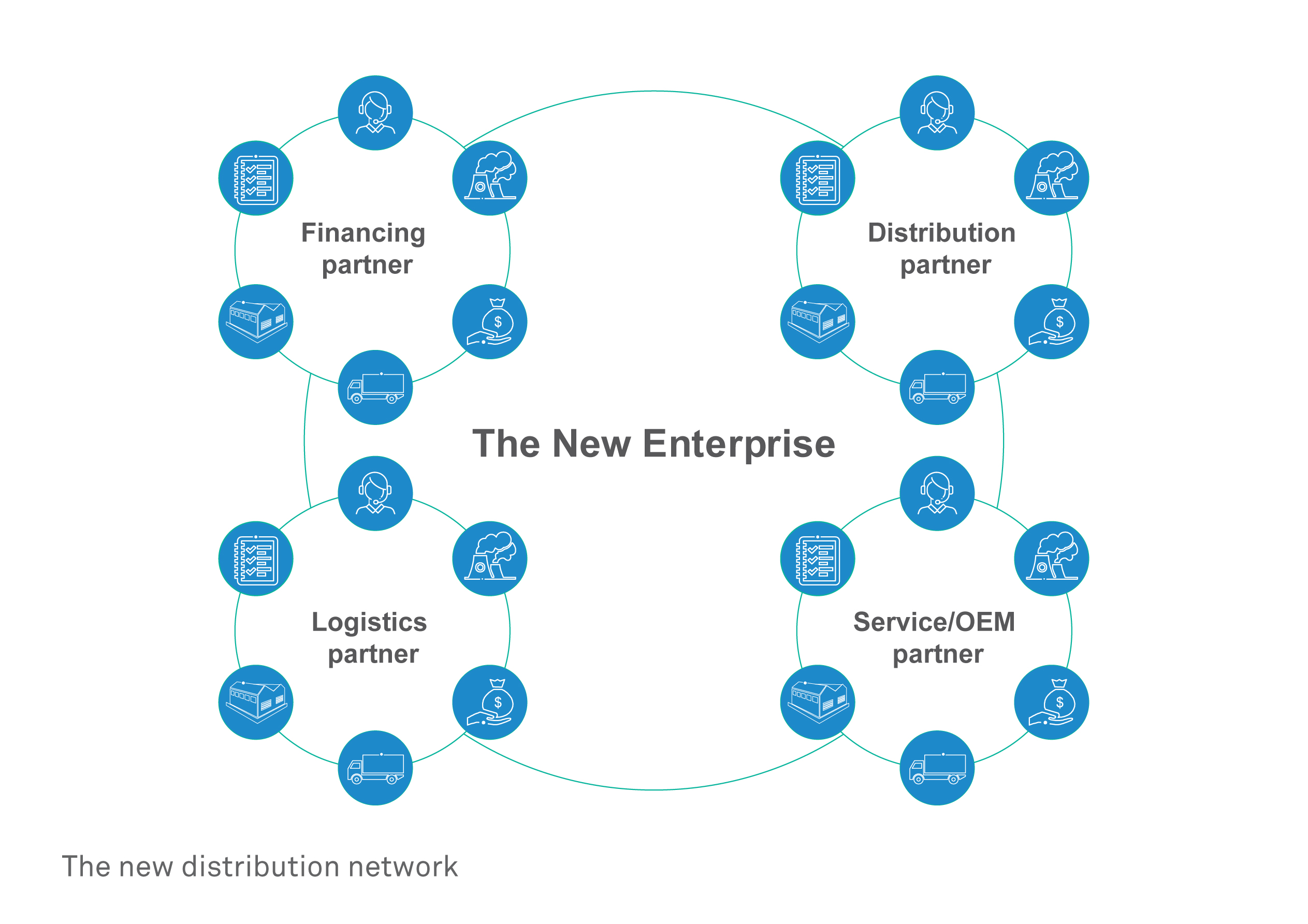This article discusses on how a network-enabled distribution system can help generate value and provide a competitive advantage to enterprises
Tough market competition with shrinking margins are forcing managers to scrutinize every aspect of their operation. It is increasingly getting harder to ignore the customer's on-time, every time demands. Needless to say, enterprises are looking at how a network-enabled distribution system can provide a competitive advantage while acting as a value generator and a catalyst for new business processes.
Today, the distribution network of an enterprise that serves the purpose of delivering finished goods and services to consumers, is coming under increasing scrutiny by the CXOs. One of the reasons being that the network has largely remained untouched by the various advances in the enterprise software technology. The key focus of enterprises has been on optimizing the internal business processes to maximize efficiency and plug revenue leakages, while producing goods. Hence, the growing adoption and popularity of enterprise software applications, such as Enterprise Resource Planning (ERP), Supply Chain Management (SCM), Business Process Management (BPM), Customer Relationship Management (CRM), etc. All of these enterprise software applications have converted a disconnected enterprise into a connected enterprise. However, enterprises have been slow to respond to the challenges of maximizing efficiency in delivering finished goods to grow customer base and increase customer engagement.
Over the years, the challenges in managing the distribution of finished goods have multiplied due to the emergence of specialist partners for logistics, warehousing, financing, after sales service, etc., and market place platforms that are driving the sharing economy. Given this, there is a need to connect various partners in the enterprise’s distribution network and empower the enterprise to orchestrate the business processes across the network, thereby maximizing efficiency of the network. Today, the network is the new enterprise.
The existing enterprise software applications have helped transform enterprises by providing these key benefits
The applications are necessary and sufficient for an enterprise to optimize its business operations as long as the enterprise has a direct connect with the consumers. This applies to markets where the distribution networks do not exist or the same are controlled by the enterprise. For example, in the advanced economies like the G7, most enterprises do not have a multi-level distribution network, and the enterprise has complete visibility into the distribution and the consumer.
If there are multiple tiers of distributors involved, the enterprise is separated from the consumer by multiple degrees. Consider the challenges of enterprises in emerging markets in Asia and Africa that participate in open, multi-level distribution networks that are not operated by them:
And the KPIs/business goals that most of these enterprises chase are:
These KPIs are heavily dependent on the business processes of the partners. It is not enough to optimize the processes within an enterprise.
Just as ERPs have transformed enterprises by connecting disparate functions within an enterprise, there is a need for a platform that connects all partners and “things” in a multi-level distribution network.

With this new enterprise distribution platform, the enterprise will have complete visibility of the supply and demand at various levels, as well as that of the end consumer. This will help the enterprise devise and implement the right strategies to increase production (in case demand exceeds supply) or to increase sales and liquidate stock through promotions and incentives (in case supply exceeds demand).
The key to achieve the above KPIs is to orchestrate the business processes of the partners, in addition to optimizing the processes within an enterprise. The key requirements for this kind of a network platform are:
There are two critical success criteria for the distribution platform:
On-boarding partners on to the platform:
Enterprises should prepare an on-boarding roadmap based on the types of partners, regions and products. One significant challenge that deters partners (applicable only to multi-brand partners) from on-boarding the platform is on-boarding as many network platforms as the number of enterprises. The platform should have the capability to on-board multiple enterprises and partners with the necessary controls in place, helping the partner to transact with all enterprises on a single platform. This will also help create the network effect, quickly increasing the number of partners on the platform.
Enterprises should pass on the business benefits of on-boarding the partners, such as low inventory carrying costs, lower returns, etc., to the partners and offer them incentives. For example, the partners get 2% extra margin if they transact on the platform.
Integration with core systems of record:
The enterprise network platform should expose some APIs for easy integration to pull and push data from/to the systems of record. Data should be secure in the platform with a robust access control architecture that strictly controls the data that is accessed and shared by various partners within the network.
With the adoption of IoT and the growing number of specialist partners in distribution, connecting all the partners and “things” is only a natural evolution of the original need for a connected business. ERPs and other enterprise software connected different functions within an enterprise and connected the supply chain. Connecting the distribution chain is the next logical and natural progression that enables enterprises to ride the next wave of process transformation. It is only a matter of time before a connected distribution network becomes the norm, like ERP in the last couple of decades.
Industry :

Ramalal Saripalli
The Head of Product Management in the Business Platforms group in the Digital Operations and Platforms business division of Wipro
Ramalal Saripalli is the Head of Product Management in the Business Platforms group in the Digital Operations and Platforms business division of Wipro. He has over 16 years of experience in managing revenue generating products and platforms used globally, across multiple industries and domains - market data products for investment banking, wealth management products for retail banking, distribution management products for consumer packaged goods and digital transformation platforms for enterprise operations.